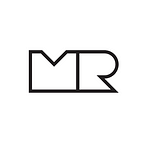Interaction Design from user research to the final concept
For the Interaction Design capstone project from the UC San Diego — Coursera IxD Specialization, I picked a briefing to work with time as a subject, I decided then to focus on time zones, as I have been seeing people struggling to grasp on time differences with no apparent solution to a problem, which was still unclear to me.
Time zones itself are pretty confusing, and there are a few considerations such as acronyms like GMT for Greenwich Mean Time, UTC, PST, JST and many more for each different location. Besides the abbreviations, there is the time offset between two distant cities, cultural differences and finally, how people actually understand it themselves, and here is exactly where I went to explore further.
.First, observation
I decided to take a close look at how people who have friends or relatives in a distant country, deals with time zones in their daily life. This step was very insightful, here I realized that there was a gap in perception of time displacement and what is currently offered in mobile apps and time zone websites.
Even though clock apps usually offer clocks for different locations, they were not enough to cover this perception gap, which is about questions like how is the day in the other side of the world by now? What might people be doing at the moment? Sleeping, awake?
Ideation
Some ideas were brainstormed on what kind of solution might be good to address the observed issues in need finding step.
Digging further, some of the ideas could be like: integrating a time status to the user calendar and his contacts, make it social with friend list feature where people could share just their available and busy times, and last but not least, the clock itself, how can the clock provide time in a more insightful way.
Validation
A paper prototype was used to sort these ideas out, as it is a quick method to test and validate ideas before moving forward with more complex details.
Some iterations of the concept were done with increments each time, little by little validating features and adding to visual design.
With user testing, both local and remote, it was possible to get valuable feedback from people on different versions of the designs. First, version A was tested, then I created a second version based on initial feedback and did an online A/B testing to see which design worked better.
Final concept and video
After obtaining insights with users and refining the app design and features, the final concept consists of a clock in which is possible to see the usual local time in different cities, the time gap and also to peek how is the upcoming hours in other countries and cities.
The time peek feature allows to drag a time sliders and compare the time moving back and forth in each clock, and to see how much of the day is left in a quick glimpse.
This project was very valuable to me, and I hope it can inspire others as well. =)
Special thanks to Scott Klemmer and everyone who contributed to this course.
